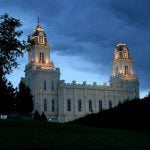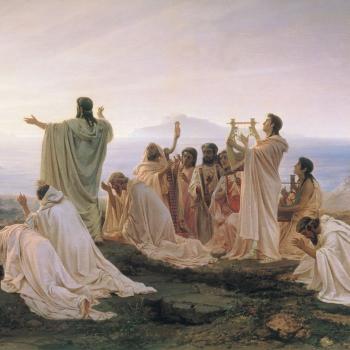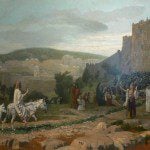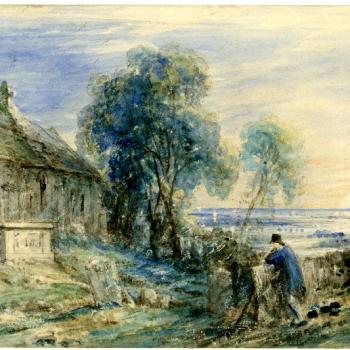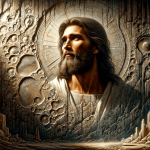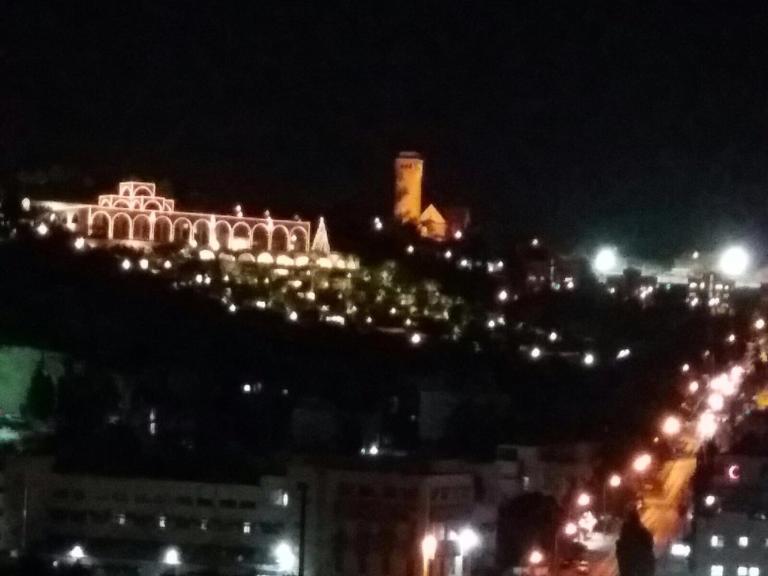
Here’s a column that Bill Hamblin and I published in the Deseret News back on 15 December 2012:
Many Western Christians observe a season called “Advent” (from the Latin “adventus” or “coming”) during the month before they celebrate Jesus Christ’s Nativity at Christmas. Advent begins on the fourth Sunday prior to Dec. 25 and opens the liturgical year in the Moravian, Presbyterian, Methodist, Lutheran, Anglican and Roman Catholic calendars. (Eastern Christian communions celebrate a rough equivalent of Advent called the “Nativity Feast,” but its role and function differ somewhat.)
Latin “adventus” is equivalent to the Greek term “parousia,” which commonly refers to Christ’s Second Coming. Not coincidentally, therefore, Advent celebrations typically anticipate his glorious return in addition to commemorating his birth in Bethlehem. Just as ancient Jews longed for the coming of the Messiah, modern Christians yearn for his Second Advent. For this reason, some theologians call Advent “the season of already/not yet.”
Advent isn’t biblical — the first plain references to it appear late in the sixth century — and it surely isn’t required for salvation. But then, the same can be said of virtually every one of our Western Christmas traditions. And, amid the high-pressure commercialism and rat race of contemporary Christmas observance (if that’s really the word for what our society does), it seems a pretty good way of preparing spiritually for what is, after all, a supremely spiritual and religious holiday (i.e., “holy day”).
Various Advent candles, calendars, and wreaths are used to mark the season and to mark off its days as they pass, as are different colors (e.g., in candles and vestments) — notably purple, blue, and, sometimes, rose.
The ecclesiastical Latin hymn “Veni, veni, Emmanuel” is a metrical version, in seven verses, of part of the vespers or evening liturgy for the final week of Advent. Its origins are unclear, but the text goes back in some form or another to at least the 12th century, and possibly to the eighth. It’s based on the prophecy in Isaiah 7:14 that God will give Israel a child symbolically called “Immanuel” (literally, “God with us”), which Matthew 1:23 says was fulfilled in the birth of Jesus. The music appears to come from a 15th-century processional hymn for French Franciscan nuns, although it, too, may have eighth century origins in a Gregorian chant.
The lyrics also echo a number of other prophetic themes. The “Rod of Jesse” refers to the prophecy in Isaiah 11:1 concerning the father of David and the Davidic messiah. The term “Dayspring” stems from a prophecy given by Zacharias, the father of John the Baptist, and recorded in Luke 1:78. The reference to the “Key of David” is inspired by Isaiah 22:22 (“the key of the house of David will I lay upon his shoulder”), which in turn refers to Isaiah 9:6 (“the government shall be upon His shoulder”).
In the 19th century, John Mason Neale and Henry Sloane Coffin translated this medieval liturgical hymn into English as “O Come, O Come, Emmanuel”:
“O come, O come, Emmanuel, and ransom captive Israel that mourns in lonely exile here until the Son of God appear. Rejoice! Rejoice! Emmanuel shall come to you, O Israel!
“O come, thou Wisdom from on high, who ordered all things mightily. To us the path of knowledge show, and teach us in her ways to go.
“O come, thou Rod of Jesse, freethine own from Satan’s tyranny. From depths of hell thy people save,and give them victory over the grave.
“O come, thou Dayspring, come and cheerour spirits by thine advent here. Disperse the gloomy clouds of night, and death’s dark shadows put to flight.
“O come, thou Key of David, come, and open wide our heavenly home. Make safe the way that leads on high, and close the path to misery.
“O come, O come, great Lord of might,who to thy tribes on Sinai’s heightin ancient times once gave the lawin cloud and majesty and awe.
“O come, Desire of Nations, bind in one the hearts of all mankind. O, bid our sad divisions cease and be yourself our King of Peace.”
In the Roman Catholic Church, two verses of the hymn are sung each week of Advent, beginning with verses one and two on the first Sunday. On the second Sunday, verses three and four are sung and, on the third, verses five and six. Finally, on the last Sunday, congregations sing the first and seventh verses.
In their hope for Christ’s return, modern Christians echo the messianic dream of ancient Israel.
Posted from Sydney, New South Wales, Australia



